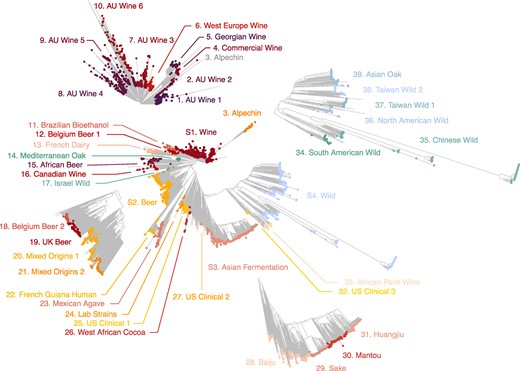Overview of the Saccharomyces cerevisiae population structure through the lens of 3,034 genomes.
Victor Loegler, Anne Friedrich, Joseph Schacherer.
G3 Genes|Genomes|Genetics. 2024. doi: 10.1093/g3journal/jkae245
With the rise of high-throughput sequencing technologies, a holistic view of genetic variation within populations—through population genomics studies—appears feasible, although it remains an ongoing effort. Genetic variation arises from a diverse range of evolutionary forces, with mutation and recombination being key drivers in shaping genomes. Studying genetic variation within a population represents a crucial first step in understanding the relationship between genotype and phenotype and the evolutionary history of species. In this context, the budding yeast Saccharomyces cerevisiae has been at the forefront of population genomic studies. In addition, it has a complex history that involves adaptation to a wide range of wild and human-related ecological niches. Although to date more than 3,000 diverse isolates have been sequenced, there is currently a lack of a resource bringing together sequencing data and associated metadata for all sequenced isolates. To perform a comprehensive analysis of the population structure of S. cerevisiae, we collected genome sequencing data from 3,034 natural isolates and processed the data uniformly. We determined ploidy levels, identified single nucleotide polymorphisms (SNPs), small insertion–deletions (InDels), copy number variations (CNVs), and aneuploidies across the population, creating a publicly accessible resource for the yeast research community. Interestingly, we showed that this population captures ∼93% of the species diversity. Using neighbor-joining and Bayesian methods, we redefined the populations, revealing clustering patterns primarily based on ecological origin. This work represents a valuable resource for the community and efforts have been made to make it evolvable and integrable to future yeast population studies.

